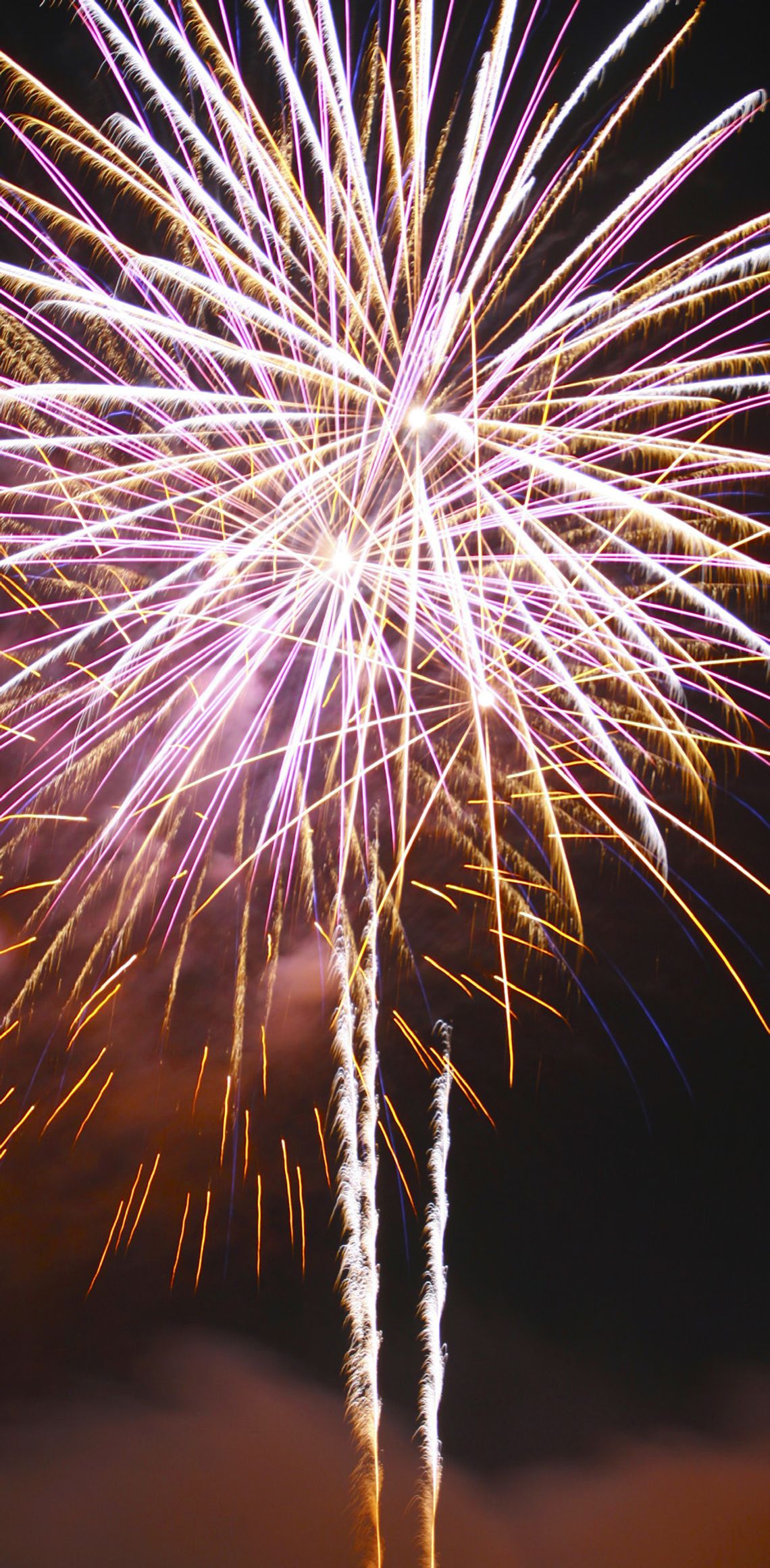FOURTH OF JULY
Fourth of July, though a celebration of American Independence, has become synonymous with one thing – fireworks. And inherently with an activity that involves explosions, precautions need to be taken to ensure a safe holiday. Local medical and fire officials have tips on how to remain safe and still have a blast.
According to the National Firework Protection Association, fireworks started an estimated 31,302 fires in 2022, including 3,504 structure fires, 887 vehicle fires, 26,492 outside fires and 418 unclassified fires. These fires caused approximately six civilian deaths, 44 civilian injuries and $109 million in direct property damage. The association went on to state that in 2022, United States hospital emergency rooms treated an estimated 10,200 people for fireworks related injuries. Children younger than 15 years of age accounted for 28% of the estimated 2022 injuries.
“Fireworks are extremely dangerous,” said Dawn Koepp, regional director of trauma services for CHRISTUS Santa Rosa Health System. “It is better to enjoy a public fireworks display. But, if you do choose to legally use fireworks, there are some things to remember. Do not use fireworks while under the influence, do not hold them in your hands, do not light them indoors and maintain a safe distance once it's lit.”
Hays County Fire Marshal Steve Seddig said Hays County adopted the 2018 International Fire Code, which does allow the use of fireworks and requires a permit to sell them. Though Hays County allows fireworks, Seddig said several cities in the county do not, including San Marcos, Wimberley, Kyle and Mountain City. He said Buda and Dripping Springs allow firework use within the city but not in the city parks.
“Another thing that fire code talks about is just making sure aerials and mortars are pointed upwards and away from spectators,” Seddig said. “The mortars and aerials, if they're shot up in the air, typically, they're designed to extinguish before they hit the ground. So it's important that they're shot vertically, so that they go high enough and they extinguish before they hit the ground.”
Some of the other tips Seddig provided were from the Department of Homeland Security, which stated that fireworks should be used outdoors, and there should be a safety perimeter designated around the area where the fireworks will be lit. He said to have a water bucket nearby to extinguish any small fires that could occur in the safety perimeter, and children should not be allowed in that area.
“Over 60% of the injuries are children under the age of 15, and out of that, 60% of those are boys,” Seddig said. “They encourage you not to try to relight a dud. If it doesn't work then that's one to leave alone or throw in the water bucket.”
Another important safety tip is to avoid holding the fireworks while lighting them, as Seddig said they are intended to be lit from the ground. He said it is also important to keep your wits about you when handling fireworks.
“It's good to remain sober during that time so that you don’t compound chances of you having injury,” Seddig said.
He added that any previously lit combustible materials or duds should be put in the water bucket or wet down in some manner to prevent a trash fire.
“Most people have plastic garbage cans, and combustibles, once they start burning in a garbage can, that plastic material becomes fuel,” Seddig said. “It’s going to spread quickly with the plastic garbage can as fuel.”
An additional safety precaution Seddig mentioned regarding children has to do with sparklers. He said loose fitting and flammable fabrics could cause an issue, but cotton should be safe. According to the National Fire Protection Association, a quarter of firework injuries can be attributed to children using sparklers.
“The sparklers burn at 2,000 degrees, and they can touch skin, causing severe burns and damage to the eyes with the sparks that are flying off and, again, ignite clothing,” Seddig said. “An excellent alternative for the kids would be the novelty type stuff – party poppers or light sticks.”
Seddig said to also be mindful of pets, which could be hyper and anxious.
“If you keep them indoors, hopefully you can kind of mute some of the sounds,” Seddig said. “Close the curtain, so they don't see the flashes, and maybe turn on some music, or something like that.”
Seddig said the Keetch-Byram Drought Index is predicting moderate fire conditions.
“Heavier fuels will be harder to ignite right now,” Seddig said, adding that the predictions go as far as July 3 and moderate conditions should support firework use. However, predictions for the rest of the summer could be rife for fire. “We've had several, three plus, meetings already that have involved Texas Forest Service. And they are predicting a similar fire danger this year [as last year]. Fortunately, we've experienced a lot of rainfall, and we're doing pretty good right now. But things are starting to dry out, and all the stuff that's been green is starting to turn brown. They're forecasting that we're going to have some of the same problems we had last year. But at current, on the Fourth of July, it's still safe to do fireworks. But as it dries out, it's going to be more of a problem.”
With the possibility of future forest fires looming, Seddig said the Hays County Fire Marshal's Office and the Office of Emergency Services are trying to encourage HOA’s and smaller communities to become Firewise Communities. There are already several in the county: Blanco River Branch HOA, Summer Mountain Ranch, Mustang Valley, Crystal Hills, Bear Creek Estates and Reunion Ranch. For more information on how to become a Firewise Community and to download the Band Together Program Toolkit go to nfpa.org/ education-and-research/ wildfire/firewise-usa.











